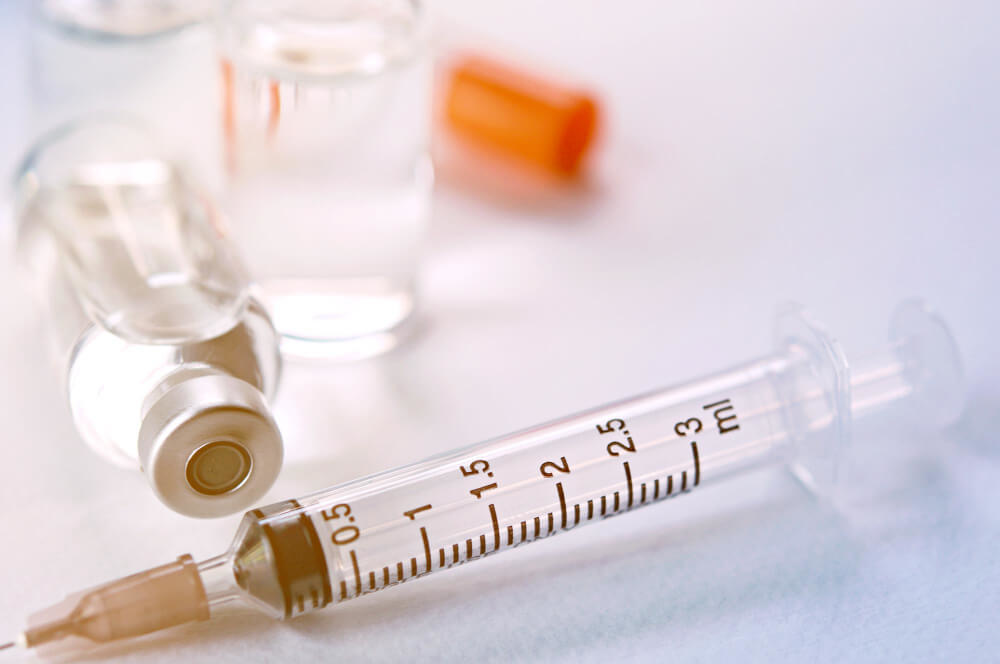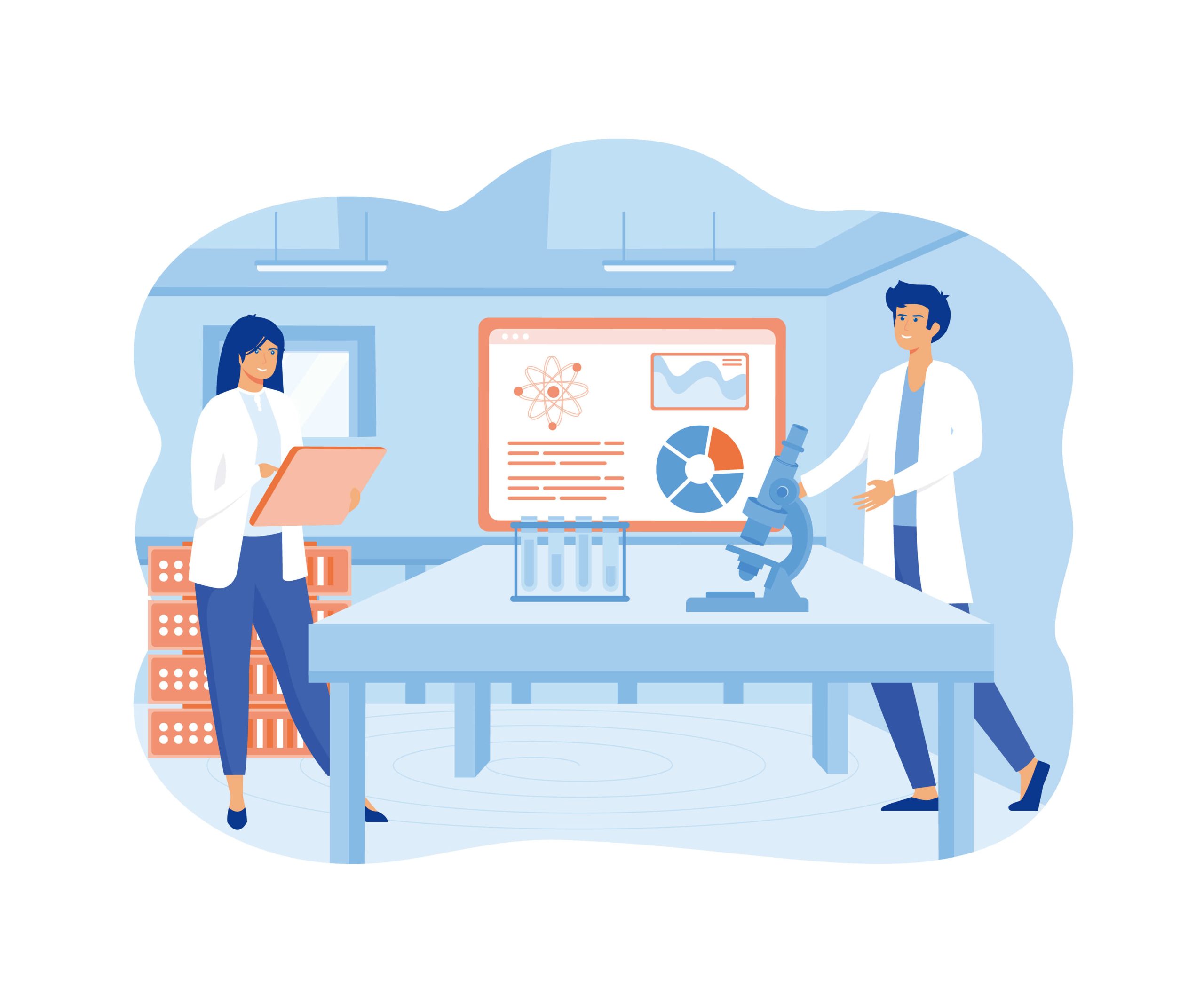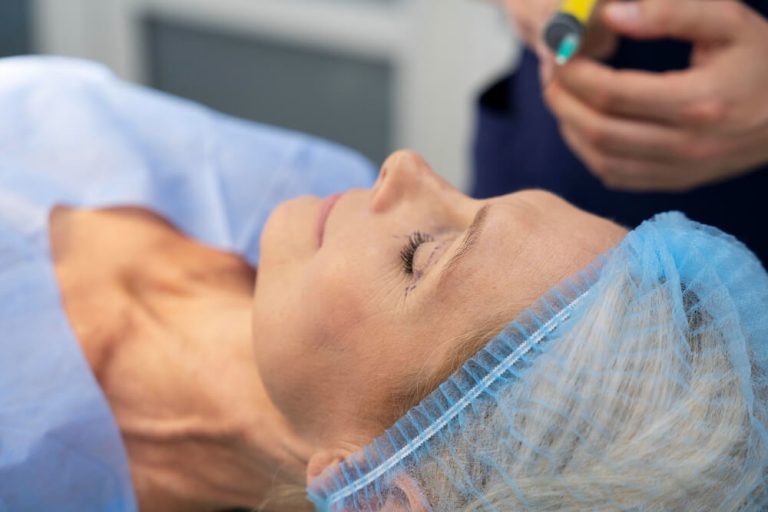The Ultimate Guide to Menopause Training: Exercising for a Stronger, Healthier Future
Menopause is often discussed in hushed tones, framed as an ending or a period of loss. But what if we reframed it as a powerful transition, a new chapter that demands a new strategy for health and wellness? This transition brings significant hormonal shifts that change everything from your mood to your metabolism, and the way you approach fitness must evolve too. This is where the concept of menopause training becomes not just beneficial, but essential.
Understanding how to adapt your physical activity is the key to navigating this stage with strength and vitality. It involves moving your body with intention, armed with the knowledge of what’s happening internally. For healthcare professionals and individuals alike, specialized menopause training provides the crucial insights needed to create effective, safe, and empowering fitness protocols for this unique phase of life.
A one-size-fits-all approach to exercise simply doesn’t work anymore. The workouts that served you well in your thirties may now leave you feeling exhausted, sore, or even injured. Your body is sending new signals, and learning to listen and respond with a targeted training plan can make all the difference in your long-term health, happiness, and longevity.

Why Does Exercise Become So Important During Menopause?
During perimenopause and menopause, the decline in estrogen acts as a catalyst for a cascade of physiological changes. This isn’t just about hot flashes and night sweats; the effects are systemic, impacting your muscles, bones, heart, and brain. Exercise emerges as one of the most powerful tools you can wield to counteract these changes and protect your future health.
One of the most significant shifts is the loss of muscle mass, a condition known as sarcopenia. Estrogen plays a role in muscle synthesis, so as its levels drop, maintaining and building lean muscle becomes more challenging. This loss of muscle slows down your metabolism, making it easier to gain weight, particularly visceral fat around your abdomen, which is linked to numerous health risks.
Your bone health also takes a major hit. Estrogen is protective of bone density, and its decline accelerates bone loss, dramatically increasing the risk of osteoporosis and fractures later in life. Furthermore, your cardiovascular system becomes more vulnerable. Estrogen helps keep blood vessels flexible and manages cholesterol levels, so its absence can lead to increased stiffness and higher risk factors for heart disease.
Beyond these physical changes, exercise is a potent manager of common menopausal symptoms. It can help regulate body temperature to reduce the severity of hot flashes, improve sleep quality, and significantly boost mood by releasing endorphins. It acts as a natural antidepressant and anti-anxiety remedy, helping to stabilize the emotional fluctuations that many women experience.

How Does Menopause Change Your Body’s Response to Exercise?
If you’ve found that your usual workout routine suddenly feels harder or less effective, you’re not imagining it. The hormonal landscape of menopause fundamentally alters how your body responds to and recovers from physical stress. Understanding these changes is the first step toward creating a smarter, more sustainable fitness plan.
The decline in estrogen affects your body’s ability to repair and build muscle tissue after a workout. Recovery takes longer, and you might feel sore for an extra day or two. This means the ‘go hard every day’ mentality can easily lead to overtraining, burnout, and injury. Your body needs more deliberate rest and recovery periods to adapt and grow stronger.
Cortisol, the primary stress hormone, also tends to be higher and more easily triggered during menopause. High-intensity, long-duration workouts that you once sailed through might now spike your cortisol levels excessively. This can lead to increased belly fat storage, disrupted sleep, and heightened feelings of anxiety, effectively canceling out the benefits you’re working so hard to achieve.
Your energy metabolism shifts as well. Your body becomes less efficient at using carbohydrates for fuel and more prone to storing them as fat. This is a state of increased insulin resistance, which can be a precursor to more serious metabolic issues. The right kind of exercise can directly combat this by improving your body’s insulin sensitivity.
Ultimately, menopause demands a more intuitive and compassionate approach to fitness. It’s about listening to your body’s daily signals. Some days you might feel energetic and ready for a challenge, while on other days, a gentle walk or a stretching session is exactly what your body needs. The goal is consistency over intensity.

What Are the Core Components of an Effective Menopause Training Plan?
An optimal menopause training plan isn’t about a single type of exercise. It’s a holistic and balanced approach that incorporates several key pillars of fitness. Each component addresses specific changes and challenges of menopause, working together to build a resilient, strong, and energetic body for the years to come. Think of it as creating a diverse portfolio for your physical health.
This strategic combination ensures you are building muscle, protecting your bones, supporting your heart, and maintaining the flexibility and balance needed for a vibrant, active life. Neglecting any one of these areas means missing a crucial opportunity to support your body through this transition. Let’s explore what these essential components are and why they matter so much.

How Can Strength Training Transform Your Menopausal Journey?
If there is one non-negotiable element of menopause training, it is resistance or strength training. This form of exercise is your single most powerful weapon against the metabolic slowdown, muscle loss, and bone density decline that characterize this life stage. Its benefits are profound and far-reaching.
When you lift weights, use resistance bands, or perform bodyweight exercises, you create microscopic tears in your muscle fibers. As your body repairs these tears, the muscle becomes stronger and denser. This process of building lean muscle mass directly counteracts sarcopenia and revs up your resting metabolism, meaning you burn more calories even when you’re not exercising.
A higher metabolism makes it easier to manage your weight and reduce the accumulation of harmful visceral fat. More importantly, strong muscles improve your body’s ability to use glucose, enhancing insulin sensitivity and lowering your risk of type 2 diabetes. This is a critical metabolic advantage during menopause.
Furthermore, strength training is essential for skeletal health. The mechanical stress that resistance exercises place on your bones signals your body to build new bone tissue. This process, known as bone remodeling, directly combats the accelerated bone loss that occurs after estrogen declines. For anyone concerned about osteoporosis, it is crucial to incorporate exercise for strong bones into their routine.
Aim for at least two to three strength training sessions per week, focusing on compound movements that work multiple muscle groups at once, like squats, lunges, push-ups, and rows. Prioritize progressive overload, which means gradually increasing the weight, reps, or sets over time to continually challenge your muscles and stimulate growth.

Why is Cardiovascular Exercise Still Crucial?
While strength training takes center stage, cardiovascular exercise remains a vital supporting actor in your menopause fitness plan. Its primary role is to protect your heart, which becomes more vulnerable as the protective effects of estrogen diminish. Regular cardio strengthens your heart muscle, improves circulation, and helps manage blood pressure and cholesterol levels.
This is particularly important given that heart disease risk escalates for women after menopause. Understanding your personal risk profile is a wise first step. Many forward-thinking healthcare providers now prioritize a thorough cardiovascular risk assessment in menopausal patients to guide preventative strategies, with exercise being a cornerstone of any plan.
Beyond heart health, cardio is a fantastic tool for managing weight and boosting your mood. It burns calories, helps improve sleep patterns, and is incredibly effective at reducing stress and anxiety. The rhythmic nature of activities like brisk walking, jogging, cycling, or swimming can have a meditative effect, providing a much-needed mental health lift.
During menopause, it’s smart to vary the intensity of your cardio workouts. High-Intensity Interval Training (HIIT), which involves short bursts of all-out effort followed by brief recovery periods, is very time-efficient and excellent for improving metabolic health. However, because it can be stressful on the body, it should be used strategically, perhaps once or twice a week. On other days, Low-Intensity Steady-State (LISS) cardio, like a long walk or a gentle bike ride, can provide all the heart-health benefits without spiking cortisol levels. Public health organizations consistently reinforce this, with resources from the NHS recommending exercise as a key method for managing symptoms and improving overall health.

What Role Do Flexibility and Mobility Play?
With all the focus on muscle and heart health, it’s easy to overlook flexibility and mobility, but they are the key to moving through life with ease and without pain. Many women experience increased joint stiffness and achiness during menopause, partly due to hormonal changes affecting the fluid in the joints and the elasticity of connective tissues.
This is where practices like yoga, Pilates, and dedicated stretching routines become invaluable. They work to improve your range of motion, lengthen tight muscles, and lubricate your joints. This not only alleviates everyday aches and pains but also reduces your risk of injury during other activities. A more flexible body is a more resilient body.
These practices also have a profound impact on your nervous system. The focus on breathwork and mindful movement in yoga and Pilates helps to lower cortisol levels and shift your body from a ‘fight or flight’ state to a ‘rest and digest’ state. This can be incredibly beneficial for managing stress, reducing anxiety, and improving sleep quality, all of which are common challenges during menopause.
Incorporating just 10 to 15 minutes of stretching or mobility work into your daily routine can make a significant difference. You can do it first thing in the morning to ease stiffness or in the evening to wind down before bed. Think of it as essential maintenance for your body’s framework.

Is Balance Training Really Necessary?
Balance training might seem like something reserved for the much older, but it becomes increasingly important from perimenopause onward. The combination of muscle loss and decreasing bone density means that a simple fall can have much more serious consequences than it would have a decade earlier, potentially leading to a debilitating fracture.
Balance is a skill, and like any skill, it can be improved with practice. Good balance relies on a complex interplay between your brain, your inner ear, and the nerves in your muscles and joints, a system known as proprioception. Training your balance sharpens these connections, making you more stable and less likely to stumble.
It doesn’t require a lot of time or fancy equipment. Simple exercises like standing on one foot while you brush your teeth, walking heel-to-toe across a room, or practicing tai chi can significantly improve your stability. Yoga and Pilates are also excellent for developing both static and dynamic balance.
Improving your balance does more than just prevent falls; it builds confidence. Feeling steady and secure on your feet translates into more confidence in all your physical activities, encouraging you to stay active and engaged with the world around you.

How Can You Tailor Your Workouts to Specific Menopause Symptoms?
While a balanced fitness plan is the goal, some days your symptoms will take center stage. Learning to adapt your exercise routine based on how you feel is a form of self-care and a smart training strategy. Instead of forcing a workout that your body is fighting, you can choose movement that supports what you need most on that particular day.
For instance, on days when hot flashes are frequent and intense, a high-intensity workout in a warm gym might be unbearable. Instead, you could opt for a swim in a cool pool, a walk in the early morning air, or a strength session in a well-ventilated space. Staying well-hydrated is also extra important on these days. As publications like The New York Times have reported, simple adjustments can make it possible to exercise to help with menopause symptoms without aggravating them.
If poor sleep is your primary issue, the timing of your workout matters. A morning or early afternoon session can help regulate your circadian rhythm and lead to deeper sleep. Conversely, a very intense workout too close to bedtime can be overstimulating for some women, making it harder to fall asleep. A gentle, calming yoga or stretching routine in the evening, however, could be the perfect way to prepare your body for rest.
When mood swings, irritability, or anxiety are high, almost any form of movement can help. The endorphin release from a brisk walk, a dance class, or a bike ride can provide an immediate mood lift. Professional organizations like the American College of Sports Medicine offer guidance on navigating menopause with exercise, often highlighting its powerful mental health benefits.
For concerns about weight gain, particularly around the midsection, the combination of strength training and strategic cardio is your best bet. Strength training builds the muscle that boosts your metabolism, while a mix of HIIT and LISS cardio helps with calorie expenditure and heart health. This two-pronged approach is far more effective than just focusing on cardio alone.

When Should You Talk to a Professional?
While this guide provides a solid framework, every woman’s menopause journey is unique. Your health history, current fitness level, and specific symptoms all play a role in determining the best exercise plan for you. For this reason, seeking professional guidance can be a game-changing investment in your health.
Before beginning any new or strenuous exercise program, it is always wise to consult with your doctor or a healthcare provider. They can assess your overall health, discuss any pre-existing conditions like heart issues or joint problems, and give you the green light to proceed safely. This conversation is also a great opportunity to discuss your symptoms and overall menopause care plan.
Understanding exactly where you are in the transition can also be incredibly helpful. A knowledgeable provider can guide you through the process of diagnosing perimenopause with lab tests and clinical signs, giving you a clearer picture of your hormonal health. This information can help you and your fitness professional make more targeted decisions about your training.
Working with a qualified personal trainer, physical therapist, or health coach who has expertise in menopause is ideal. They can design a personalized program that respects your body’s changes, helps you achieve your specific goals, and teaches you proper form to prevent injury. They can be an invaluable source of accountability, motivation, and expert advice.
As awareness grows, more healthcare practices are specializing in this area. The emergence of new business models for a longevity-focused medical clinic shows a shift towards providing this type of comprehensive, personalized care for women in midlife and beyond. Don’t hesitate to seek out these experts.

What Are Some Practical Tips for Getting Started and Staying Consistent?
Knowing what to do is one thing; actually doing it consistently is another. The key to long-term success is to make exercise a sustainable and even enjoyable part of your life. Start small. If you’re new to exercise, a 10-minute walk each day is a fantastic beginning. You can gradually increase the duration and intensity as you get stronger.
Find an activity you genuinely like. If you despise running, don’t force it. Try dancing, hiking, swimming, pickleball, or a group fitness class. When you enjoy the movement, it stops feeling like a chore and becomes a form of recreation. Scheduling your workouts as non-negotiable appointments in your calendar can also dramatically increase your adherence.
Consistency trumps perfection every time. It’s better to do a 20-minute workout three times a week than to do a heroic 90-minute session once and then be too sore or unmotivated to exercise for the rest of the month. Listen to your body, celebrate your progress, and be kind to yourself on off days. Menopause training is a marathon, not a sprint, and it’s a powerful investment in a long, healthy, and vibrant life.
Menopause is not a disease to be cured but a natural life stage to be managed with wisdom and strength. By embracing a strategic and intelligent approach to exercise, you can take control of your health, mitigate unwanted symptoms, and build a powerful foundation for the decades to come. It’s about more than just surviving menopause; it’s about thriving through it.
Frequently Asked Questions

Can I still get pregnant naturally after a POI diagnosis?
While a diagnosis of Premature Ovarian Insufficiency significantly impacts fertility, it does not make natural pregnancy completely impossible. Ovarian function in POI can be intermittent, meaning the ovaries may occasionally release an egg, and a small percentage of women (around 5-10%) do conceive spontaneously after their diagnosis. However, these pregnancies are unpredictable and cannot be relied upon as a fertility plan.
Because of this unpredictability, it is crucial to discuss family-building goals with a healthcare provider and a fertility specialist. They can provide a realistic outlook and explore more reliable options, such as in vitro fertilization (IVF) with a donor egg, which has a very high success rate. Using contraception is also recommended if you are not trying to conceive, as spontaneous ovulation can still occur.

Is hormone therapy for POI different from HRT for natural menopause?
Yes, the approach and goals of hormone therapy for POI are fundamentally different from those for natural menopause. For women with POI, the treatment is truly "hormone replacement," aiming to restore estrogen and progesterone levels to what they would be in a healthy young woman. This replacement is considered essential to prevent long-term health complications and is typically continued until the average age of natural menopause (around 51).
In contrast, hormone therapy for natural menopause is primarily used to manage symptoms like hot flashes and is not always considered medically necessary. The dosages and types of hormones may also differ, as the goal for POI is to mimic a natural menstrual cycle to protect bone, cardiovascular, and brain health. Therefore, the risk-benefit calculation is viewed very differently, with replacement therapy being strongly recommended for most women with POI.

Besides fertility and hot flashes, what are the other long-term health risks of POI?
The long-term health risks of untreated POI extend far beyond reproductive concerns due to the prolonged lack of estrogen. One of the most significant risks is osteoporosis, as estrogen is critical for maintaining bone density, and its absence can lead to weak, brittle bones and an increased fracture risk at a young age. This makes bone density screening a critical part of ongoing management.
Additionally, the loss of estrogen is associated with an increased risk of cardiovascular disease, as the hormone plays a protective role in heart health. There can also be impacts on neurological and emotional well-being, with some studies suggesting a higher risk for anxiety, depression, and potential changes in cognitive function. Proper hormone replacement therapy is the primary strategy to mitigate these serious long-term health consequences.
Discover the most comprehensive functional medicine training, longevity training, and biohacking certification programs designed specifically for healthcare professionals, medics, and clinic owners who want to master regenerative medicine protocols and anti-aging therapies.







